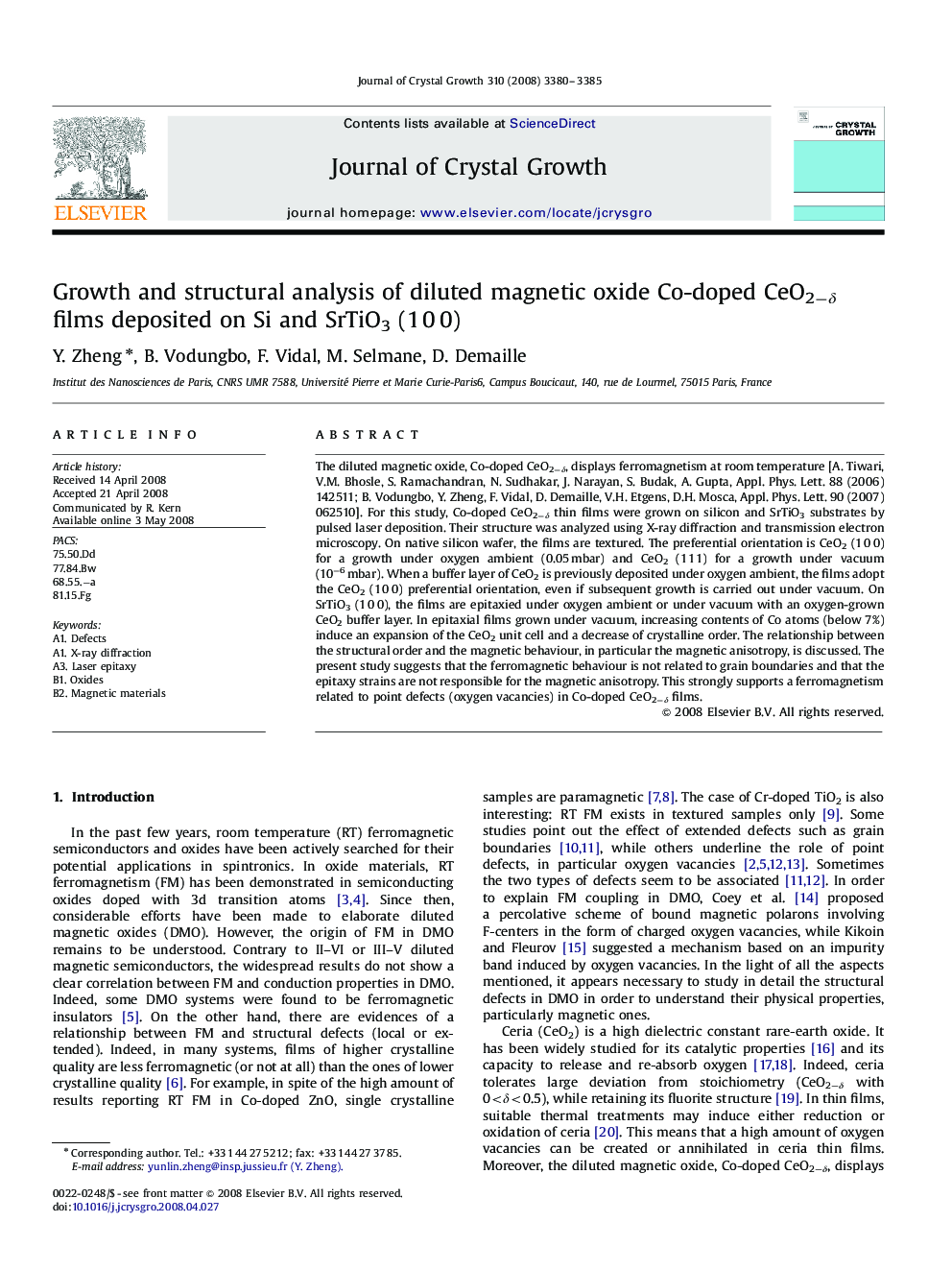| Article ID | Journal | Published Year | Pages | File Type |
|---|---|---|---|---|
| 1795449 | Journal of Crystal Growth | 2008 | 6 Pages |
The diluted magnetic oxide, Co-doped CeO2−δ, displays ferromagnetism at room temperature [A. Tiwari, V.M. Bhosle, S. Ramachandran, N. Sudhakar, J. Narayan, S. Budak, A. Gupta, Appl. Phys. Lett. 88 (2006) 142511; B. Vodungbo, Y. Zheng, F. Vidal, D. Demaille, V.H. Etgens, D.H. Mosca, Appl. Phys. Lett. 90 (2007) 062510]. For this study, Co-doped CeO2−δ thin films were grown on silicon and SrTiO3 substrates by pulsed laser deposition. Their structure was analyzed using X-ray diffraction and transmission electron microscopy. On native silicon wafer, the films are textured. The preferential orientation is CeO2 (1 0 0) for a growth under oxygen ambient (0.05 mbar) and CeO2 (1 1 1) for a growth under vacuum (10−6 mbar). When a buffer layer of CeO2 is previously deposited under oxygen ambient, the films adopt the CeO2 (1 0 0) preferential orientation, even if subsequent growth is carried out under vacuum. On SrTiO3 (1 0 0), the films are epitaxied under oxygen ambient or under vacuum with an oxygen-grown CeO2 buffer layer. In epitaxial films grown under vacuum, increasing contents of Co atoms (below 7%) induce an expansion of the CeO2 unit cell and a decrease of crystalline order. The relationship between the structural order and the magnetic behaviour, in particular the magnetic anisotropy, is discussed. The present study suggests that the ferromagnetic behaviour is not related to grain boundaries and that the epitaxy strains are not responsible for the magnetic anisotropy. This strongly supports a ferromagnetism related to point defects (oxygen vacancies) in Co-doped CeO2−δ films.
